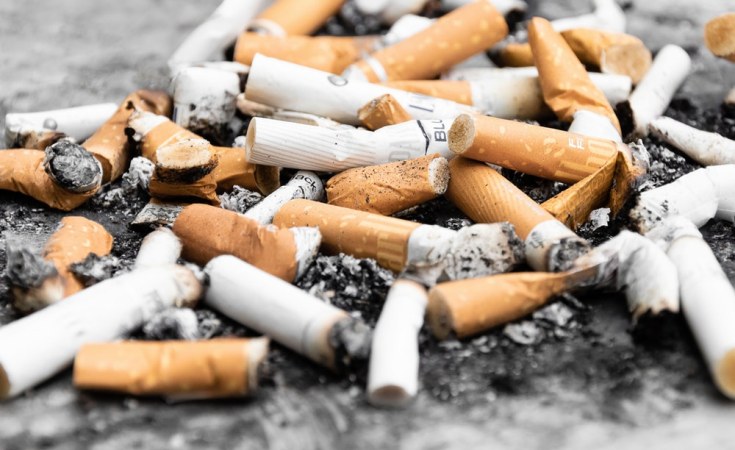The second Tobacco Harm Reduction International Media Meeting took place on September 28th, 2021. This hybrid meeting was organized online and live by Independent scientific organization, “Arbilis”.
Moderated by Professor Borislav Georgiev, Head of Cardiology clinic at National Cardiology Hospital, in Sofia, Bulgaria, medical experts discussed tobacco harm reduction and the harmful effects of smoking cigarettes that causes serious diseases, among them hypertension, diabetes, heart disease, and cardio vascular diseases (CVD).
Harm Reduction aims “to minimize negative health, social and legal impacts associated with drug use, drug policies and drug laws” according to the NGO “Harm Reduction International”. Safety belts, airbags, speed limits, sun protection…. are considered as harm reduction tools. When it comes to tobacco, harm reduction does not seem as evident as other areas of practice. The number of high-level conferences and discussions around this topic proves it. A growing number of alternatives to traditional cigarettes such as e-cigarettes and heated tobacco products are considered as reduced-risk products since some of them have been proven to be less harmful than cigarettes, but many beg to differ such as the World Health Organization.
One of the main point that has been made during this meeting, and main argument in favor of those alternatives, was the fact that despite the risks of disease and death, a large number of smokers fail to quit: “ Annually, without assistance, only 5% of smokers succeed to quit smoking permanently” according to Dr. Emil Toldy-Schedel, President of the Harm Reduction Medical Society in Hungary, cardiologist, General Director of St. Ferenc Hospital. He added that “besides complex intervention such as Nicotine Replacement Therapy (NRT), therapy with medication, professional consultation, the quitting rate remains rather low with 8% of success”.
When it comes to successful alternatives, the Swedish SNUS is often cited: “Swedish men have by far the lowest rate of cancer and heart disease deaths compared to the whole European Union” said Professor Dr. Wolfgang Popp, pulmonologist, Döbling Doctors’ Center, Vienna, Austria. He intervened to answer the question about whether tobacco harm reduction could complement to the management of chronic respiratory diseases in smokers. He also referred to IQOS (heated tobacco manufactured by Philip Morris International) which has been authorized by the FDA (Food and Drug Administration) to be marketed as a “heating system with reduced exposure” arguing that “the IQOS system heats tobacco but does not burn it and that this significantly reduces the production of harmful and potentially harmful chemicals”.
The FDA also stated that “scientific studies have shown that switching completely from conventional cigarettes to the IQOS system significantly reduces body exposure to harmful or potentially harmful chemicals”. For him, there is no doubt that “harm reduction is the realistic and holistic solution for health optimization”.
Also, the experts recalled that it is the high level of combustion that is responsible for diseases and not nicotine that is, as a matter of fact, “present in our diet in small amount” adding that smokers “need nicotine” not necessarily all the chemicals in the cigarette.
“People consume about 1400 nanograms of nicotine every day with ordinary food” said Professor Victor Gurevich, Vice-president of the National Society for the Study of Atherosclerosis and Head of the Department of Atherosclerosis, Faculty of Medicine, St. Petersburg State University, Russia. Then, even if the nicotine intake continues with e-cigarettes and heated tobacco, it has minimal health risks.
Opponents on the other side, argue that long-term effects are not known and that those products are manufactured by tobacco companies. Nevertheless, he insisted that one should stick to the evidence: “scientific studies have shown that as the temperature of tobacco rises, the level of harmful chemicals produced rises too”. In fact, he said, “various scientific studies have shown that the concentrations of dangerous and potentially dangerous substances are reduced by 90-95%” in those products, and that, conventional cigarettes contain solid particles that electronic and heated tobacco don’t have. And finally, the combustion is less than 350°C whereas the traditional cigarette is between 600 and 800°C”.
He pursued: “According to the Interheart study smoking accounts for 36% of the population risk of the first myocardial infarction (heart attack). Myocardial infarction frequency is six times higher in women and three times in men who smoke more than one pack cigarettes per day compared to those who have never smoked”.
According to the World Health Organization, 1 billion people smoke worldwide. There are 6 million deaths each year. Smokers lose in average 10 years of life expectancy and around 30% of cardiovascular deaths are due to smoking. In Africa, the number of smokers rises each year.


